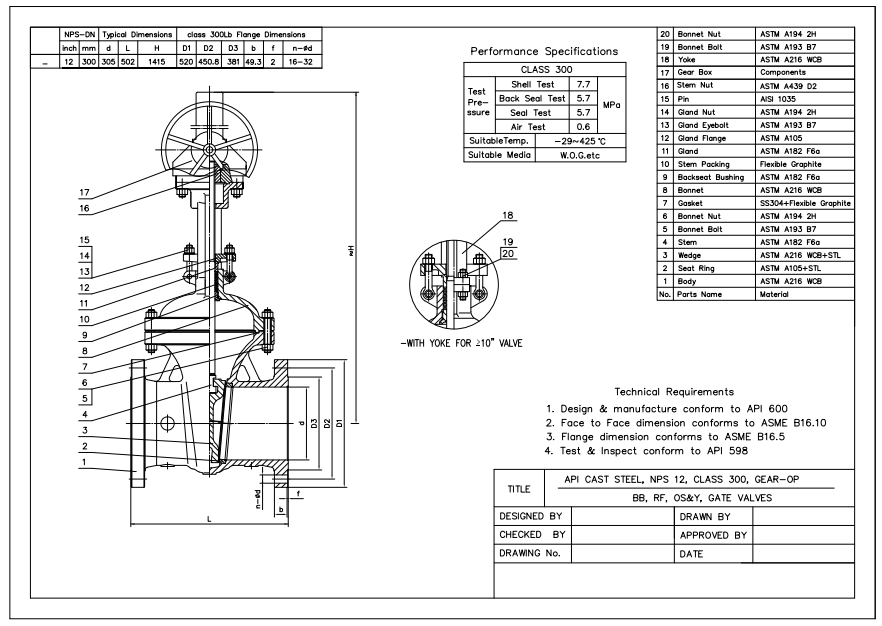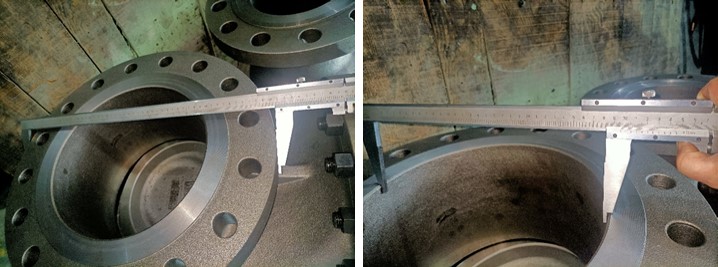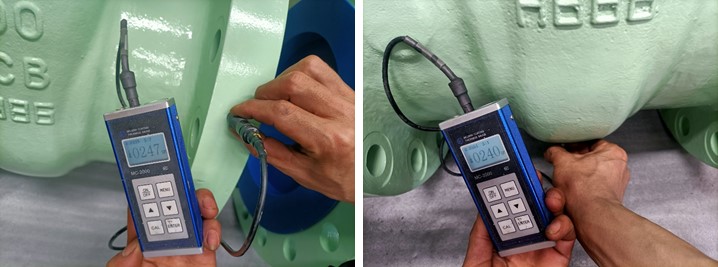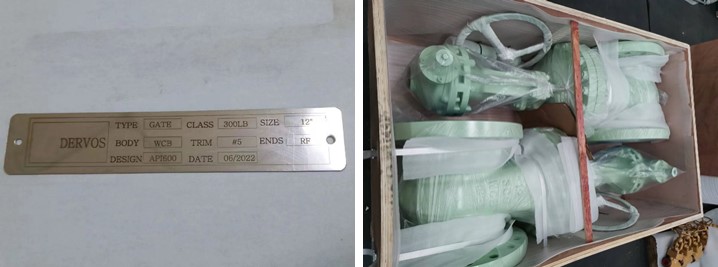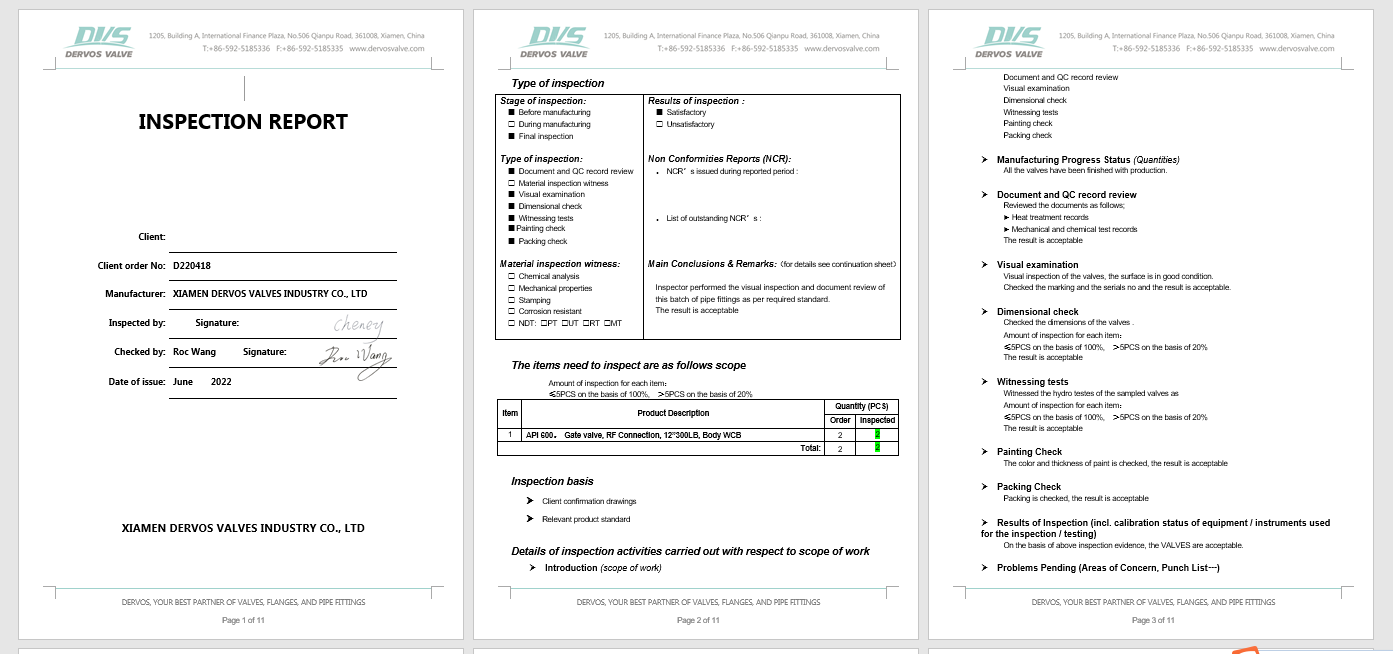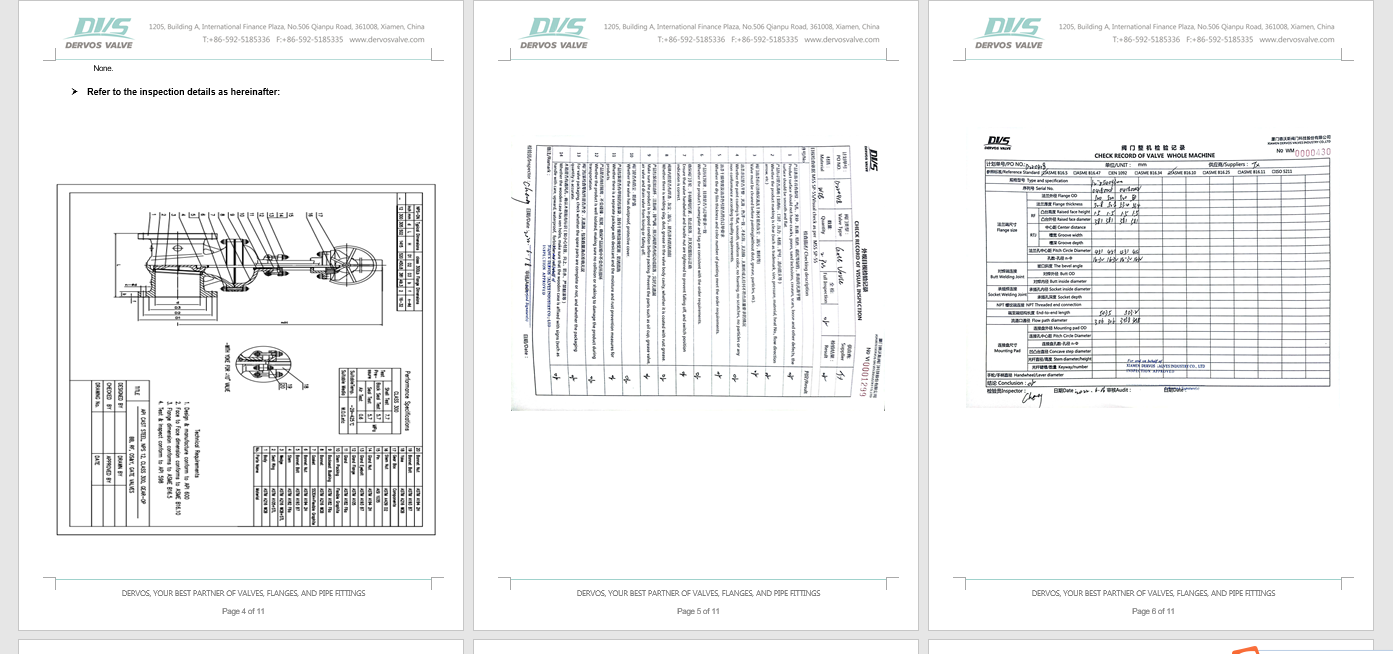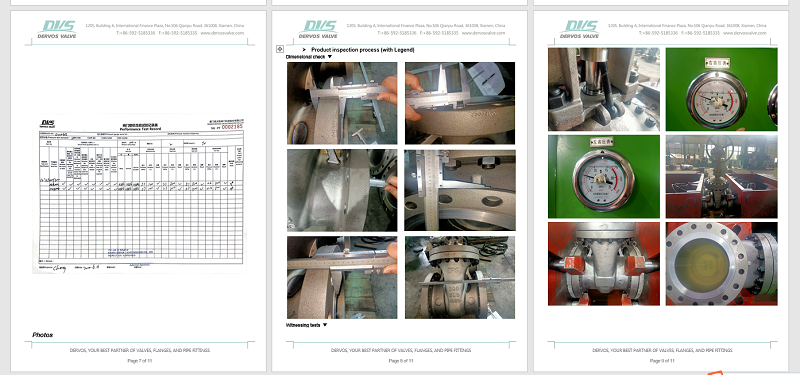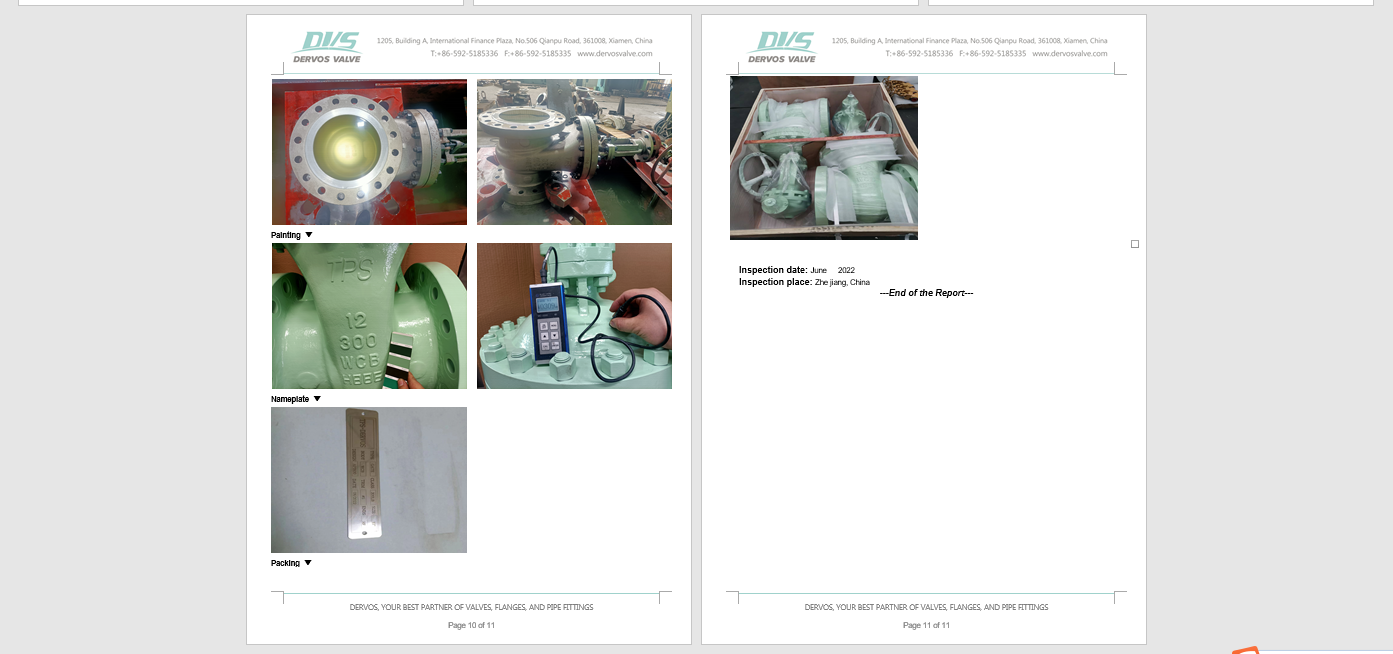16 بوصة صمام بوابة ذات حواف wcb ارتفاع الجذعية api 600
تم تصميم صمام البوابة المصنوعة من الصلب المصبوب مقاس 16 بوصة مع علبة التروس وشفة RF بسعة 600 رطل وفقًا للواجهة api 600. يتميز صمام بوابة غطاء المحرك المثبت في الجذع المرتفع ، إسفين مرن ومقعد معدني. تفاصيل سريعة نوع بوابة صمام بحجم 16 " الضغط class600 اعمال بناء انسحب بونيه ، الجذع المرتفع ، نظام التشغيل ، إسفين مرن ، مقعد معدني الإتصال الترددات اللاسلكية شفة عملية ناقل الحركة كود التصميم api 600 وجها لوجه Asme b16.10 نهاية شفة Asme b16.5 الضغط & أمبير ؛ مؤقت اسمي ب 16.34 اختبار & أمبير ؛ تفتيش api 598 مواد الجسم أ 216 WCB مواد تقليم تقليم 5 نطاق درجة حرارة -29 ℃ ~ + 425 ℃ متوسط الماء والنفط والغاز الأصل الصين البعد & أمبير ؛ مواد الفئة 600 NPS في 2 2 1/2 3 4 6 8 10 12 14 16 18 20 24 د مم 50 65 80 100 150 200 250 300 350 400 450 500 600 L-L1(rf-bw) في 11.5 13 14 17 22 26 31 33 35 39 43 47 55 مم 292 330 356 432 559 660 787 838 889 991 1092 1194 1397 ل 2(رتج) في 11.625 13.125 14.125 17.125 22.125 26.125 31.125 33.125 35.125 39.125 43.125 47.25 55.375 مم 295 333 359 435 562 664 791 841 892 994 1095 1200 1407 ح(افتح) في 18.625 21.75 23.375 28 1/16 38 3/16 44 3/16 52.375 59 13/16 68.125 72.25 90.125 98 13/16 119 مم 474 553 593 713 970 1122 1330 1519 1730 1835 2290 2510 3022 ث في 9.875 9.875 11 13/16 13.75 19 11/16 22 1/16 28.375 24 24 24 24 30 30 مم 250 250 300 350 500 560 720 610 * 610 * 610 * 610 * 760 * 760 * بالوزن(كلغ) الترددات اللاسلكية 41 58 88 131 253 413 623 784 1288 1820 2150 2540 4080 من وزن الجسم 35 50 68 104 208 328 496 637 1120 1448 1828 2201 3360 * يوصى باستخدام مشغل التروس اليدوي لا جزء اسم كربون الصلب ل astm أشابة الصلب ل astm غير القابل للصدأ الصلب ل astm WCB lcb wc6 wc9 ج 5 راجع 8 CF 8M راجع 3 CF3M 1 الجسم a216 wcb A350 lcb a217 w6 a217 wc9 a217 c5 a351 cf8 a351 cf8m a351 cf3 a351 cf3m 2 حلقة مقعد أ 105 A350 lf2 a182 f11 a182 f22 a182 f5 a182 f304 a182 f316 a182 f304l a182 f316l 3 وتد a216 wcb A350 lcb a217 w6 a217 wc9 a217 c5 a351 cf8 a351 cf8m a351 cf3 a351 cf3m 4 إيقاف a182 f6 a182 f6 a182 f304 a182 f304 a182 f316 a182 f304l a182 f316l 5 بونيه الجوز أ 194 2 ساعة أ 194 4 أ 194 7 أ 194 8 6 بونيه الترباس أ 193 ب 7 A320 l7 أ 193 ب 16 أ 193 ب 8 7 طوقا ss الجرح الجرح الحلزوني أو ss دوامة الجرح ptfe 8 غطاء محرك السيارة a216 wcb a352 lcb a217 w6 a217 wc9 a217 c5 a351 cf8 a351 cf8m a351 cf3 a351 cf3m 9 جلبة المقعد الخلفي a182 f6 a182 f6 a182 f304 a182 f304 a182 f316 a182 f304l a182 f316l 10 التعبئة الجذعية الجرافيت أو ptfe 11 فانوس a182 f6 a182 f6 a182 f304 a182 f304 a182 f304 a182 f304 a182 f316 a182 f304l a182 f316l 12 الجوز الغدة أ 194 2 ساعة أ 194 8 13 ييبولت الغدة أ 193 ب 7 أ 193 ب 8 14 دبوس الكربون الصلب أو غير القابل للصدأ صلب 15 السدادة a182 f6 a182 f304 a182 f316 a182 f304l a182 f316l 16 شفة الغدة a216 wcb a351 cf8 17 الجوز الجذعية a439 d2 أو b148-952a 18 حلمة الثدي الكربون الصلب أو غير القابل للصدأ صلب 19 الاحتفاظ الجوز الكربون الصلب 20 عجلة اليد حديد الدكتايل أو الكربون صلب 21 لوحة الاسم الفولاذ المقاوم للصدأ أو الألومنيوم 22 h.w.lock الجوز مسام الكربونl
